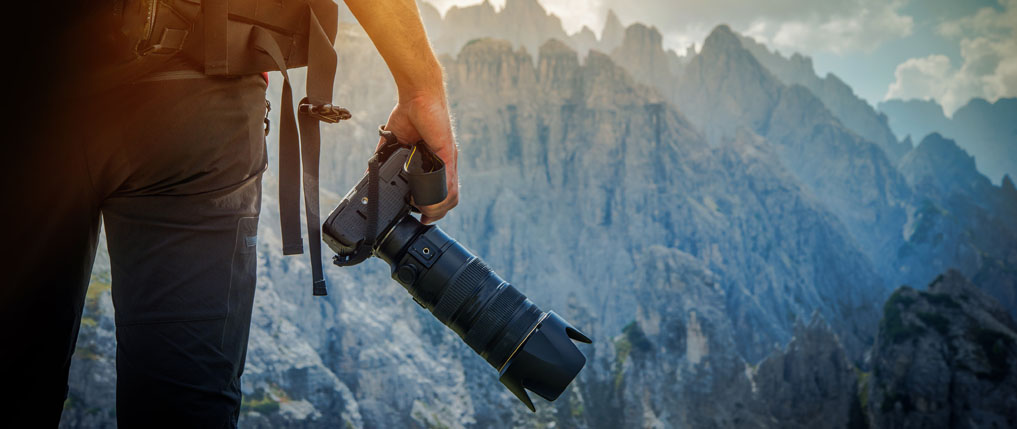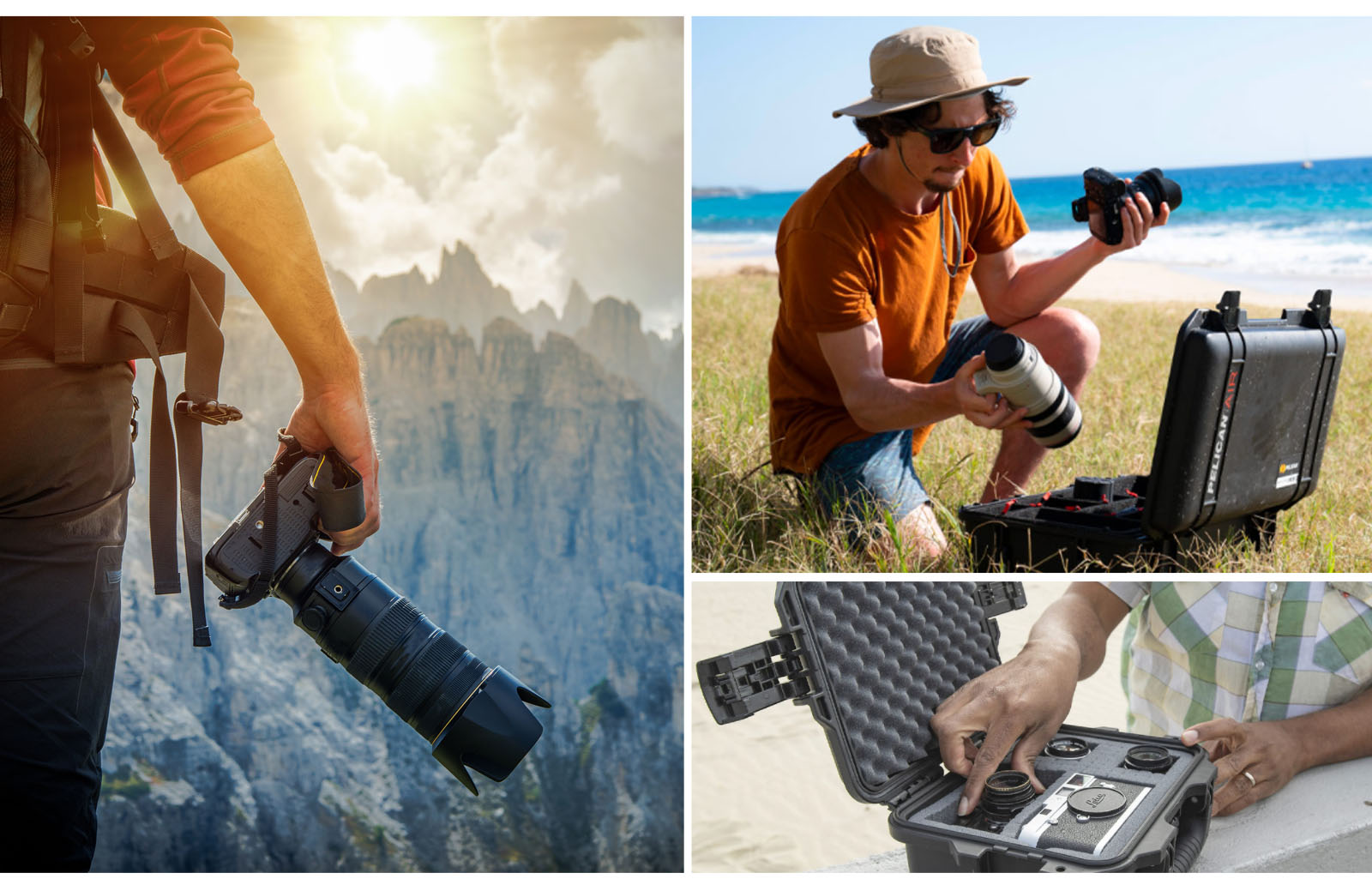How to Ship a Camera
October 31, 2021

Need to ship a camera somewhere ahead of time so you can capture stunning landscape images or local wildlife? Sometimes, carrying a camera on a plane just isn’t in the cards. Besides, some photographers prefer to ship their cameras simply to travel lighter and have all their gear waiting on arrival.
So how exactly do you ship your expensive camera gear to ensure that it arrives safely? While many recommend flimsy packaging materials and bubble wrap, cameras need much more than that. Traveling great distances, possibly even overseas, requires proper packaging like a shock-resistant camera hard case. Only this will guarantee your photography or video equipment arrives safe and sound. Here’s Pelican’s advice on how to ship a camera — the right way!
Choose a High-Quality Hard Case
Should you choose to ship a camera, you want to protect it from rough handling, rain and whatever it might encounter to reach its destination. While many might wrap it in bubble wrap that offers bare minimum protection, we recommend placing your camera inside a heavy-duty hard case. Resist the urge to send it in a cardboard box!
With an open cell core and solid wall design that is simultaneously strong and lightweight, nothing gets into Pelican hard cases. Each camera case is watertight, crushproof and dustproof, meaning if it’s left outside in the rain upon delivery, your camera will still be completely dry. With a pick and pluck foam interior, you can customize the shape to your camera’s exact dimensions.
One extra bit of advice: Choose a hard case designed for air travel and carry-on luggage. More than a rugged box with a handle, a travel case for cameras offers extra features like polyurethane wheels with stainless steel bearings and additional removable accessory pouches for lenses. Plus, they are perfectly sized to suit many airline carry-on requirements and offer an automatic purge valve that equalizes air pressure when inside the cabin.
Although a good-quality hard case will be enough to keep your camera safe in transit, you may want to consider padding with packing peanuts, bubble wrap or even bunched up plastic bags once the enclosed hard case is placed in the shipping box. A few layers of bubble wrap will help cushion the sides of the box to ensure that your hard case doesn’t get scratched in transit. Plus, putting your case in a bigger box will allow you to adhere the shipping labels and stickers to the cardboard, keeping your hard case clean.
Create a Legible Shipping Label and ‘Fragile’ Stamps
Next, make sure to create a stick-on label that is entirely legible. Avoid handwriting this at the last moment at the post office or shipping service. Instead, print it on your computer or have a printing service do it for you. If you have decent handwriting and can pull off simple block letters, you can do that, too.
Make sure to include all the details — address, zip code and country, if necessary — of your own address and the destination. Phone numbers can also come in handy if the package gets lost or misplaced in handling. Generally speaking, make certain there is no confusion as to where it came from and where the camera is headed.
Also — and this step is crucial — be sure to add a few “Fragile” stickers to the box to let handlers know to treat it with care. You can print and slap on a few around the box if you have a leftover address application.
Lastly, attach your labels to the package — and to protect them from rain (that could smear the ink), put a stretch of clear packing tape over everything. Of course, you could also do this to the corners of the exterior box, but when placing your camera in a Pelican case, there’s really no need to take this extra step of precaution.
Choose the Best Shipping for Your Camera

Take your package directly to a reliable shipper to get an idea of all your shipping options. Hopefully, you have already chosen one, maybe after researching pricing and other factors to consider. USPS, UPS and FedEx are all reliable, though some would argue that DHL and FedEx are ideal for sensitive shipments, especially ones overseas. One thing to keep in mind: If you are shipping to a remote location, USPS might have to make the final leg of the journey, regardless of what carrier you choose.
Be sure to understand what is involved with the delivery process, too. Does the package need to be signed for? Will someone other than you be there to do so? Can the package be tracked? All good questions to consider. Include tracking and a signature confirmation, at the very least. Tracking will let you know when your camera has arrived at its destination. And a signature will confirm it has been received.
Insure the Package
Make sure to choose a shipping service that can insure your camera and insure it for the total amount you paid for it, along with any gear and even the camera case itself. The automatic $50 insurance often offered with a Priority Mail service simply won’t cover your DSLR camera. So, do yourself a favor and insure anything valuable and get a receipt to prove it. Then, should your camera get lost or damaged in shipment, you can collect the insurance.
If you’re a professional photographer, be sure to get a separate policy. You can obtain one through photographer organizations and guilds like the Professional Photographers of America.
How to Ship a Camera Effortlessly and Worry-Free
Consider all these steps and plan accordingly. Luckily, Pelican camera cases offer superior protection for your camera and all its related gear. In addition, securing your camera in our foam-padded cases can give you a sense of relief, knowing that damage is highly unlikely.

SIGN UP FOR EXCLUSIVE OFFERS
Sign up for our newsletter and get exclusive access to new product launches, special offers and much more.
RELATED BLOGS















